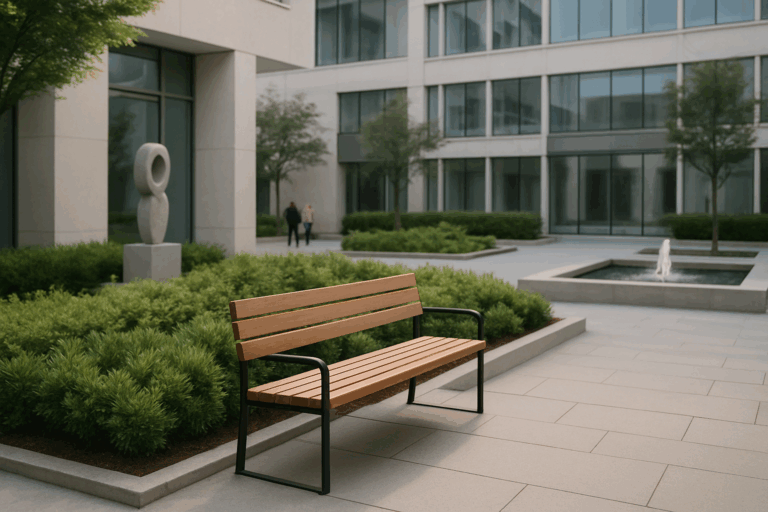The abundance of physical and digital clutter can leave us feeling overwhelmed, stressed, and yearning for a simpler, more streamlined existence. That’s where the ‘Pack Light’ philosophy comes in. An antidote to the noise and clutter of modern life, this principle espouses a minimalistic approach to living, encouraging us to pare down our possessions, commitments, and distractions to the essentials.
The concept of ‘Pack Light’ is not about denying ourselves the things we enjoy or need. Instead, it’s about prioritizing what truly matters, eliminating excess, and creating space for peace, productivity, and happiness. It’s about designing a life that’s lighter, simpler, and more fulfilling.
In this comprehensive guide, we’ll delve into the ‘Pack Light’ philosophy and explore practical ways to embrace it in different aspects of our lives. From decluttering physical spaces to simplifying digital landscapes, from setting clear priorities to fostering healthier relationships, we aim to provide you with an array of actionable tips to help you lead a simpler, happier life.
We’ll begin by discussing what the ‘Pack Light’ philosophy really entails and why it’s gaining momentum in our increasingly complex world. We’ll debunk some common misconceptions about this philosophy and highlight the potential benefits it can bring to your life.
Understanding ‘Pack Light’ Philosophy
‘Pack Light’ is more than just a minimalist mantra. It’s a mindset, a way of life that goes beyond decluttering your closet or desktop. It involves evaluating the things and commitments in your life and discarding those that no longer serve you. It’s about making intentional choices about what you allow into your life and what you choose to let go. It’s about embracing the freedom and joy that comes with living with less.
Benefits of Embracing ‘Pack Light’
Next, we’ll delve into the benefits of embracing the ‘Pack Light’ philosophy. We’ll look at how simplifying your life can lead to lower stress levels, increased productivity, improved mental health, and an enhanced sense of satisfaction. We’ll also explore the environmental impact of living with less and how it can contribute to sustainable living practices.
Practical Ways to Embrace ‘Pack Light’
Once we’ve laid the groundwork, we’ll guide you through practical steps you can take to embrace the ‘Pack Light’ philosophy. We’ll provide tips for decluttering your home, simplifying your digital life, reducing unnecessary commitments, and cultivating mindfulness. We’ll also share strategies for maintaining a ‘Pack Light’ lifestyle in the long run.
Whether you’re feeling overwhelmed by clutter, seeking to simplify your life, or simply curious about the ‘Pack Light’ philosophy, this guide is for you. Join us as we embark on a journey towards a simpler, happier existence.
Introduction to the ‘Pack Light’ Philosophy
Have you ever found yourself burdened by the complexities of life, with an overwhelming array of possessions, responsibilities, and routines? If so, then the ‘Pack Light’ philosophy could be the answer. Originating from the minimalist movement, this approach to life encourages us to strip away the non-essentials and focus on what truly matters. In this article, we will explore this philosophy in depth, shedding light on how it can enhance our life and promote a sense of contentment.
One of the key tenets of the ‘Pack Light’ philosophy is the reduction of physical possessions. By limiting what we own, we can create a more organized, clutter-free environment, which in turn can help to reduce stress and increase our overall happiness. This doesn’t mean we should live with nothing – rather, it’s about identifying what we genuinely need and use, and discarding the rest.
But ‘Pack Light’ goes beyond just physical possessions. It also extends to our commitments and responsibilities. Often, we overload our schedules with tasks, events, and obligations, leaving little time for relaxation and self-reflection. By cutting back on these non-essential commitments, we can free up time and energy for the things that truly enrich our lives.
Embracing the ‘Pack Light’ Philosophy: A Step-by-Step Guide
So, how can you apply the ‘Pack Light’ philosophy to your own life? It’s not something that happens overnight. It requires a deliberate and ongoing effort. Here’s a step-by-step guide to help you get started.
1. Assess what you have: The first step is to take stock of your possessions and commitments. What do you own? What activities are you involved in? Which responsibilities do you have? It can be helpful to write these down or use a tool such as a spreadsheet to keep track.
2. Identify what’s essential: Next, identify what you truly need and value. These are the things that enhance your life and contribute to your happiness and well-being. Everything else can be considered non-essential.
3. Start eliminating the non-essentials: Once you’ve identified the non-essentials, start eliminating them. This might mean selling or donating unused items, or saying no to commitments that don’t align with your values or enrich your life.
For a visual guide on how to do this, check out the video “How to Simplify Your Life” by Break the Twitch on YouTube. It provides a practical and engaging overview of the process.
Benefits of the ‘Pack Light’ Philosophy
The ‘Pack Light’ philosophy offers numerous benefits, many of which have been backed by scientific research. Some of the key benefits include:
- Reduced stress: A cluttered environment or overloaded schedule can lead to increased stress. By simplifying our surroundings and commitments, we can create a more serene and peaceful state of mind.
- Increased focus: With fewer distractions and responsibilities, we can concentrate better on the tasks at hand. This can lead to increased productivity and satisfaction.
- More time and energy: By cutting back on non-essentials, we free up time and energy for the things that truly matter to us. This can lead to a more fulfilling and meaningful life.
To see these benefits in action, watch the YouTube video “The Art of Simple Living” by FightMediocrity. The video features inspiring examples of people who have embraced the ‘Pack Light’ philosophy and reaped its rewards.
‘Pack Light’ Philosophy and Technology
Technology can play a crucial role in embracing the ‘Pack Light’ philosophy. For instance, digital tools can help us organize our lives, automate tasks, and reduce physical clutter. Here are some examples:
- Digital calendars: These can be used to manage our schedules, set reminders, and reduce the need for physical planners and calendars.
- Cloud storage: Storing files in the cloud can eliminate the need for physical storage devices, freeing up space in our homes and workplaces.
- Automation tools: Tools like IFTTT (If This, Then That) can automate routine tasks, freeing up our time and mental energy for more important things.
However, it’s important to remember that technology is a tool, not a solution in itself. It should be used to support the ‘Pack Light’ philosophy, not to create new complexities or distractions.
Comparison: ‘Pack Light’ Philosophy vs. Traditional Lifestyle
To better understand the ‘Pack Light’ philosophy, it can be helpful to compare it to a more traditional lifestyle. The following table illustrates some of the key differences:
| Aspect | ‘Pack Light’ Philosophy | Traditional Lifestyle |
| Material possessions | Limited to essentials | Accumulation encouraged |
| Commitments | Reduced to priorities | Overloaded schedules common |
| Focus | Quality over quantity | Quantity often prioritized |
| Outcome | Less stress, more focus, more freedom | Increased stress, divided attention, less freedom |
As the table illustrates, the ‘Pack Light’ philosophy promotes a simpler, more focused lifestyle compared to the often cluttered and hectic traditional lifestyle. By understanding these differences, you can make a more informed decision about whether this philosophy is right for you.

Conclusion
In concluding, it’s crucial to revisit the key points we’ve touched upon in this article. We’ve delved into the realm of Information Technology and Engineering, exploring complex concepts that, when understood, can significantly enhance the way we interact with the technology that surrounds us.
Firstly, we highlighted the importance of software engineering in modern life. In today’s digital age, software engineers are the architects and builders of our virtual environment. They create the systems that enable our devices to function, whether that’s your smartphone, your computer, or the software that powers an entire organization. Understanding the intricacies of software engineering can give you a deeper appreciation for the digital world and its potential.
Secondly, we broke down the nuts and bolts of IT infrastructure. This complex network of hardware, software, networks, and facilities is the backbone of any modern business. We touched on the various layers of IT infrastructure, each playing a vital role in an organization’s ability to perform its day-to-day operations. Recognizing these various components and their functions can provide invaluable insights into the workings of any technologically driven enterprise.
Thirdly, we delved into the increasingly relevant field of cybersecurity. As the digital landscape continues to evolve, so too do the threats posed by cybercriminals. By comprehending the methods and techniques employed by these malicious actors, we can better equip ourselves and our organizations against potential cyber attacks.
Finally, we discussed the role of data analytics in driving business strategy. Data, often referred to as the ‘new oil,’ is a critical asset in the 21st century. The ability to analyze and interpret this data can provide businesses with a competitive edge, enabling them to make more informed, strategic decisions.
In essence, the topics discussed in this article all play pivotal roles in shaping our digital landscape. They are key to understanding how we can leverage technology to its fullest potential. By comprehending these complex concepts, we equip ourselves with the knowledge to navigate the increasingly digital world we live in.
As we move forward, it’s important to continue learning and exploring these areas. Your feedback is invaluable to us, so feel free to leave your comments below. If you found this article helpful, don’t hesitate to share it with your peers. The more we share our knowledge, the more empowered we become. Remember, knowledge is power.
For further reading, I recommend the following resources:
1. BCS – The Chartered Institute for IT
2. ACM – Association for Computing Machinery
3. IETF – Internet Engineering Task Force
Remember, the learning journey never ends. Stay curious, stay informed, and keep pushing the boundaries of your knowledge.
References:
1. IBM
2. Microsoft
3. Google
4. Apple



